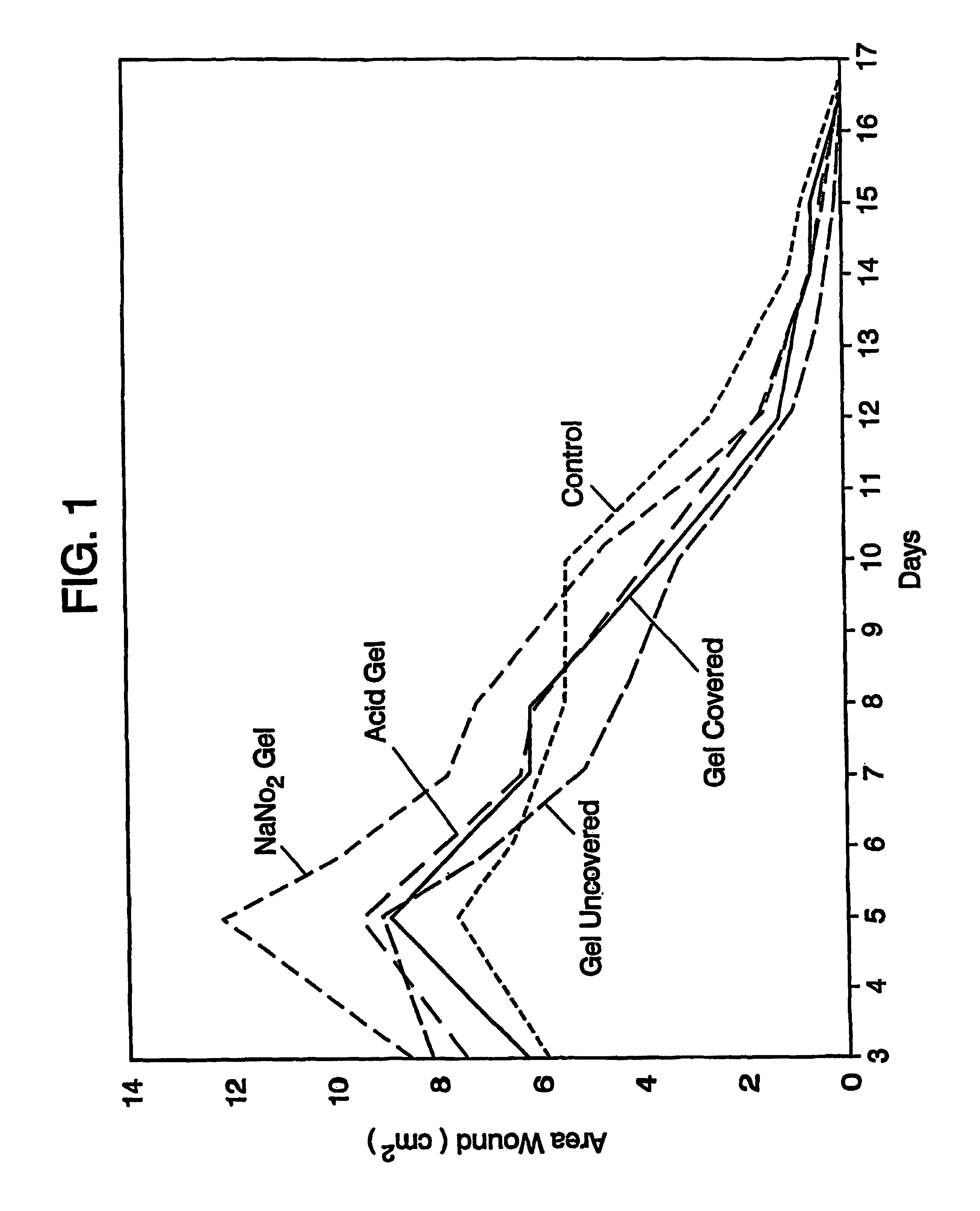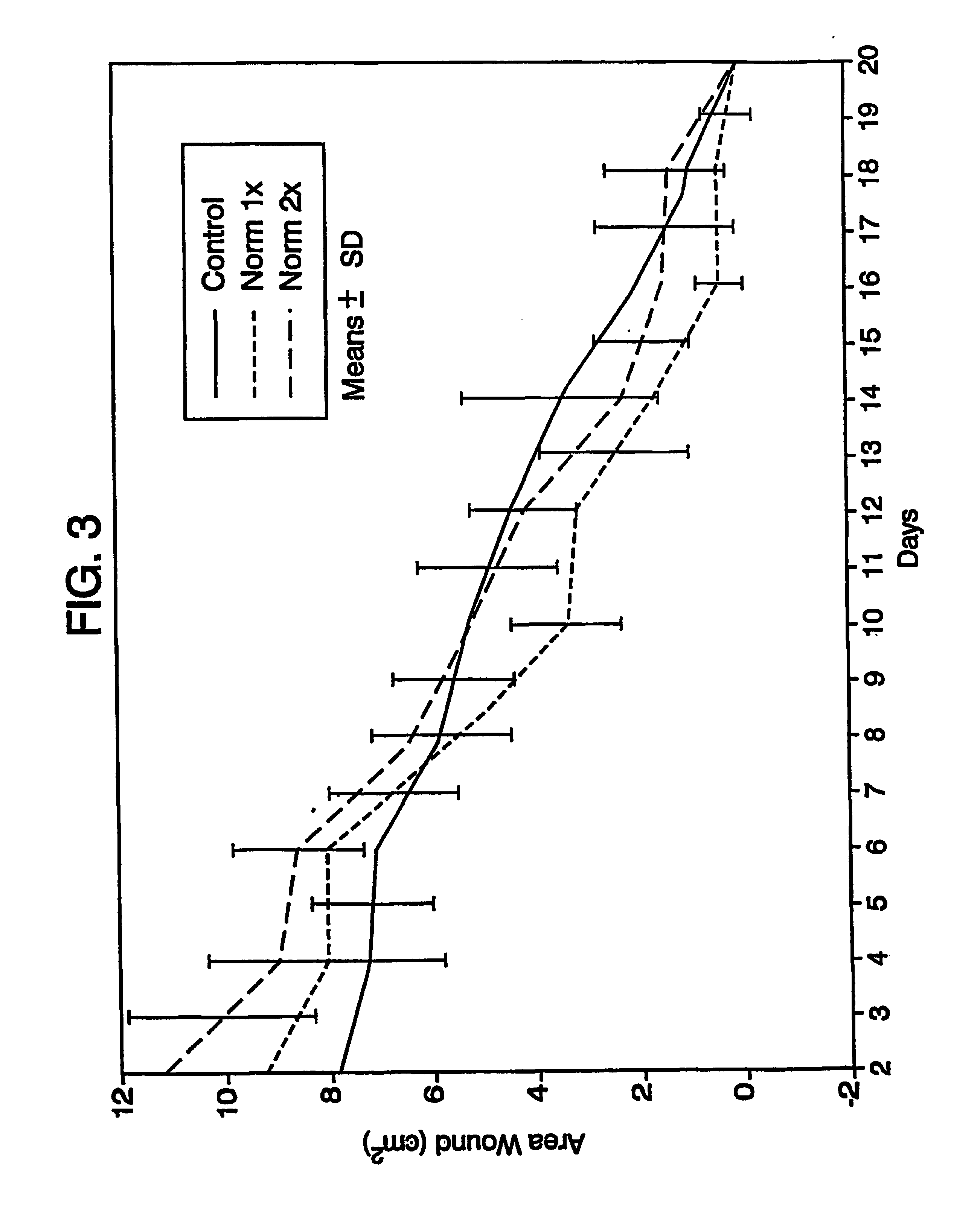Systems and methods for topical treatment with nitric oxide
a technology of nitric oxide and systemic treatment, applied in the field of tissue malfunction remedies, can solve problems such as undesirable systemic side effects, and achieve the effect of lessening any skin irritation
- Summary
- Abstract
- Description
- Claims
- Application Information
AI Technical Summary
Benefits of technology
Problems solved by technology
Method used
Image
Examples
example 1
Experimental Procedure for Checking the Rapid Release of NO
[0064]Immediately before use a powdered combination of sodium nitrite (15 mmoles) and ascorbic acid (20 mmoles) is mixed magnetically with powdered maleic acid (20 mmoles) in a 500 ml four-necked flask connected (via ground-glass joints having stopcocks) to a vacuum pump, a manometer, an argon inlet, and a stoppered dropping funnel with pressure equalizer. After repeated evacuations and purgings with argon, water from the dropping funnel is admitted into the flask with stirring. A quantitative evolution of colorless NO with effervescence is observed by the pressure increase and corresponds to 15mmoles of NO. On admitting air into the flask until the pressure equalizes with atmospheric pressure, the red-brown color of NO2 appears. The chemical reaction (4), where vitamin C is Asc(OH)2 and maleic acid as MalH shows the reaction producing NO:
2NaNO2+2MalH+Asc(OH)2→NO+2NaMal+2H2O+AscO2 (4)
example 2
Experimental Procedure for Preparing an Ointment Which Will Slowly Release NO
[0065]The three components mentioned above, in the same ratios, are admixed with a petroleum-based nonaqueous ointment such as petrolatum Vaseline, forming a thick slurry. When applied topically on the skin, this ointment will slowly release NO with water vapor that permeates trough the nonaqueous medium.
example 3
[0066]Experimental Procedure for Preparing a Water-based Gel for Gradual Topical Release of NO
[0067]The three components of Example 1 are used, but sodium nitrite and maleic acid are kept in separate gels prior to use. A warm solution of sodium nitrite (0.1 mole (1 to 5% concentration) in distilled water is converted into a gel by adding hydroxyethylcellulose (molecular weight 250,000-1,250,000) or another gel-forming substance such as another cellulose derivative, gelatin or agar, e.g., in such a ratio as to obtain the desired consistency of the gel, and to incorporate all the solution, after 24 h at room temperature. For instance, with 1.6 g of hydroxyethylcellulose with average molecular weight 750,000, one obtains a satisfactory transparent gel with 50 ml solution. Separately, another gel is prepared similarly from distilled water, hydroxyethylcellulose, maleic acid (0.1 moles) and ascorbic acid (0.15-0.2 moles, same concentration as the nitrite). On admixing equal amounts of th...
PUM
| Property | Measurement | Unit |
|---|---|---|
| Composition | aaaaa | aaaaa |
| Acidity | aaaaa | aaaaa |
| Strength | aaaaa | aaaaa |
Abstract
Description
Claims
Application Information
 Login to View More
Login to View More - R&D
- Intellectual Property
- Life Sciences
- Materials
- Tech Scout
- Unparalleled Data Quality
- Higher Quality Content
- 60% Fewer Hallucinations
Browse by: Latest US Patents, China's latest patents, Technical Efficacy Thesaurus, Application Domain, Technology Topic, Popular Technical Reports.
© 2025 PatSnap. All rights reserved.Legal|Privacy policy|Modern Slavery Act Transparency Statement|Sitemap|About US| Contact US: help@patsnap.com



